Exhibition announcement | too much, too soon!
° too much, too soon! | 15 December 2018 – 17 January 2019
Opening
14 December, 19.00 - 21.30
Project curators: Gülsen Bal and Walter Seidl
With Mustafa Akkaya, Tim Brennan, Aydan Murtezaoğlu, Erkan Özgen, Milica Tomić; Lala Raščić, Christina Werner
In situ Performance: 14 December, 20.00
Fortress Europe #82 by Tim Brennan
Venue: Mekan 68
Neustiftgasse 68/1, 1070 Vienna
The exhibition too much, too soon! resonates with recent political history, which reflects diverse perspectives on issues of then and now in addressing a reality in which “there is no state in Europe” beyond its borders. In this conviction, can Europe really make it when one considers what is marked by both before and after 1989 where “the notion of the East should be understood as the product of Europe as ideology”?
What is interesting in this argument prevails in a deeper question concerning the so-called alternative left (meaning deprived) politics at the time when “democracy is suspended in the interest of European integration and the survival of the Eurozone” with the same token? Particularly by the disputable “trans-historical” claim on national prefixes as well as ‘sovereign’ nation states. So, what generates the emergence of necropolitical situations? And, what kind of changes are articulated in current artistic practices to create different forms of articulations?
This engages us with processes of returning to a lost “history” in critical dialogue where political developments overlap with unpredictable forces beyond “dialectical mediation.” Then, how is this reflected in the artistic production that is almost canonised, in which suppression becomes the way of their life and the prisons are almost their home while bedlam is their surroundings?
In this manner, the participant artists in too much, too soon! address when art ‘becomes’ art in its global appropriation with its sensitive momentous sovereignty within the current political situation globally as well as how it resituates truth of a world.
Artistic positions and info:
The imputed Power
Installation, various dimension, 2018
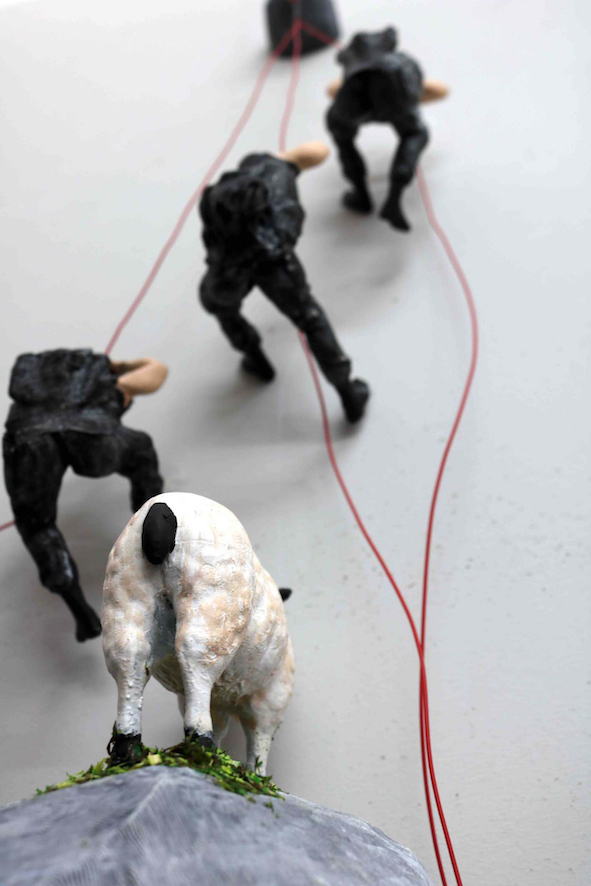 Mustafa Akkaya employs particular facets in his most recent art practice with highly sophisticated sculpture-based 3D printed figures of ordinary people, animals, or objects, which are generally contrived elegant “yet potentially evil since they are strange and uncanny” regarding their multi-facetted tyranny of reality. His art works have the quality of bringing up what happens on most occasions or in most situations of declining hegemonic desire by revealing the symptomatic constructs of sovereign risks of our time.
Mustafa Akkaya employs particular facets in his most recent art practice with highly sophisticated sculpture-based 3D printed figures of ordinary people, animals, or objects, which are generally contrived elegant “yet potentially evil since they are strange and uncanny” regarding their multi-facetted tyranny of reality. His art works have the quality of bringing up what happens on most occasions or in most situations of declining hegemonic desire by revealing the symptomatic constructs of sovereign risks of our time.
Akkaya’s newly produced installation work The imputed Power deals with an issue of exemptions that preludes the history of Cyprus' migration, which began in the 1950s and makes us face the arbitrariness of the buffer zone – also called as ‘the Green Line’, a 180 km long strip of land dividing the island into two between the Turkish Cypriot community in the north and Greek Cypriot community in the south – which is marked with its unprecedented and relatively untouched landscape through featuring an unrealistic setting against an intrinsic resistance of processes.
Fortress Europe #82
Performance and Artist Edition, 2018
 Tim Brennan’s ongoing series of works, Fortress Europe started in 1990, two years before the signing of the Maastricht agreement and the formalizing of the EU under the then 12 star flag. The project was motivated by the then (1989/90) refugee situation in London in which Brennan was involved as a part-time volunteer at The Kurdish Workers Association (Hackney, London) and the political writings of Ambalavaner Sivanandan and Rüştü Yürükoğlu. It operates as an ongoing independent institution of works with 105 to date.
Tim Brennan’s ongoing series of works, Fortress Europe started in 1990, two years before the signing of the Maastricht agreement and the formalizing of the EU under the then 12 star flag. The project was motivated by the then (1989/90) refugee situation in London in which Brennan was involved as a part-time volunteer at The Kurdish Workers Association (Hackney, London) and the political writings of Ambalavaner Sivanandan and Rüştü Yürükoğlu. It operates as an ongoing independent institution of works with 105 to date.
Fortress Europe #82 was first exhibited at The Northern Centre of Contemporary Art, Sunderland in 2015 as part of the exhibition ‘Happiness is A New Idea’ and in conjunction with The Sunderland Literary Festival. The work consists of a disjointed travelogue that discursively weaves in and out of an extensive tour of Kurdistan and Turkey Brennan made in the 1990s and includes aspects of writing made prior and reflections accredited since. It is structured in 12 sections or voices and is informed by histories of the ‘epic’ and prose poem.
Fortress Europe #82 is not limited to one mode of presentation/transmission and has surfaced via a wide range of modes that have included, wall mounting, choral recitation and an artist edition/book. The work exists as a boxed limited edition and performance for the too much, too soon! exhibition.
Photo credit:
Fortress Europe No.9
2 days Sculptural Performance
VIP Film, Berlin, October 1990
In Charge
Portfolio with 8 offset lithographs, 48,9 x 68,6 cm (x 7) and 68,6 x 48,9 cm (x 1), 2009
Courtesy of Edition Block
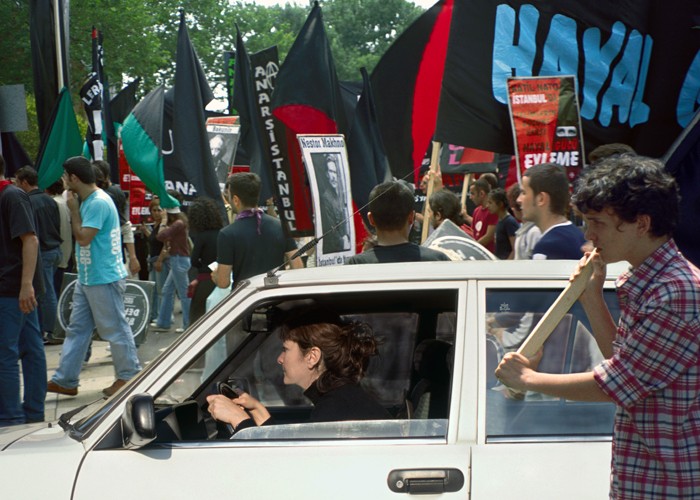 The artist Aydan Murtezaoğlu deals in her works with the boundaries and structural constraints of Turkish society and how gender roles are formed through family relationships - as well as with possible routes of escape, practices of disobedience and resistance, and gestures of disruption. She articulates these issues via a "perspective from within" that problematizes the artist's claim to an external position as critic of the culture s/he inhabits. The artist searches for ways to express her own embeddedness in the social structure and to articulate her responsibilities toward the social surroundings in which she is also involved as an artist. She formulates these same concerns in the eight offset lithographs comprising In Charge, the portfolio now being published by Edition Block. The motifs, based on her photographs, depict reenactments of situations from the domestic and public spheres. While the artist herself is always one of the central protagonists, her intent is not to resurrect autobiographical incidents. Rather, Murtezaoğlu assumes a proxy position, slips into a role in order to illuminate as many of its facets as possible. The artist is "in charge" in the sense that she assumes responsibility for examining different aspects of certain role models and the background for their development. Yet she eschews an emotional or accusatory critical stance. Instead she is concerned with differentiations: what similarities exist, what bonds us, what separates. Her investigation of social reality brings to light equivocal factors and ambiguities that disclose new, open-ended avenues of reflection.
The artist Aydan Murtezaoğlu deals in her works with the boundaries and structural constraints of Turkish society and how gender roles are formed through family relationships - as well as with possible routes of escape, practices of disobedience and resistance, and gestures of disruption. She articulates these issues via a "perspective from within" that problematizes the artist's claim to an external position as critic of the culture s/he inhabits. The artist searches for ways to express her own embeddedness in the social structure and to articulate her responsibilities toward the social surroundings in which she is also involved as an artist. She formulates these same concerns in the eight offset lithographs comprising In Charge, the portfolio now being published by Edition Block. The motifs, based on her photographs, depict reenactments of situations from the domestic and public spheres. While the artist herself is always one of the central protagonists, her intent is not to resurrect autobiographical incidents. Rather, Murtezaoğlu assumes a proxy position, slips into a role in order to illuminate as many of its facets as possible. The artist is "in charge" in the sense that she assumes responsibility for examining different aspects of certain role models and the background for their development. Yet she eschews an emotional or accusatory critical stance. Instead she is concerned with differentiations: what similarities exist, what bonds us, what separates. Her investigation of social reality brings to light equivocal factors and ambiguities that disclose new, open-ended avenues of reflection.
First Untitled
Installation, 2012
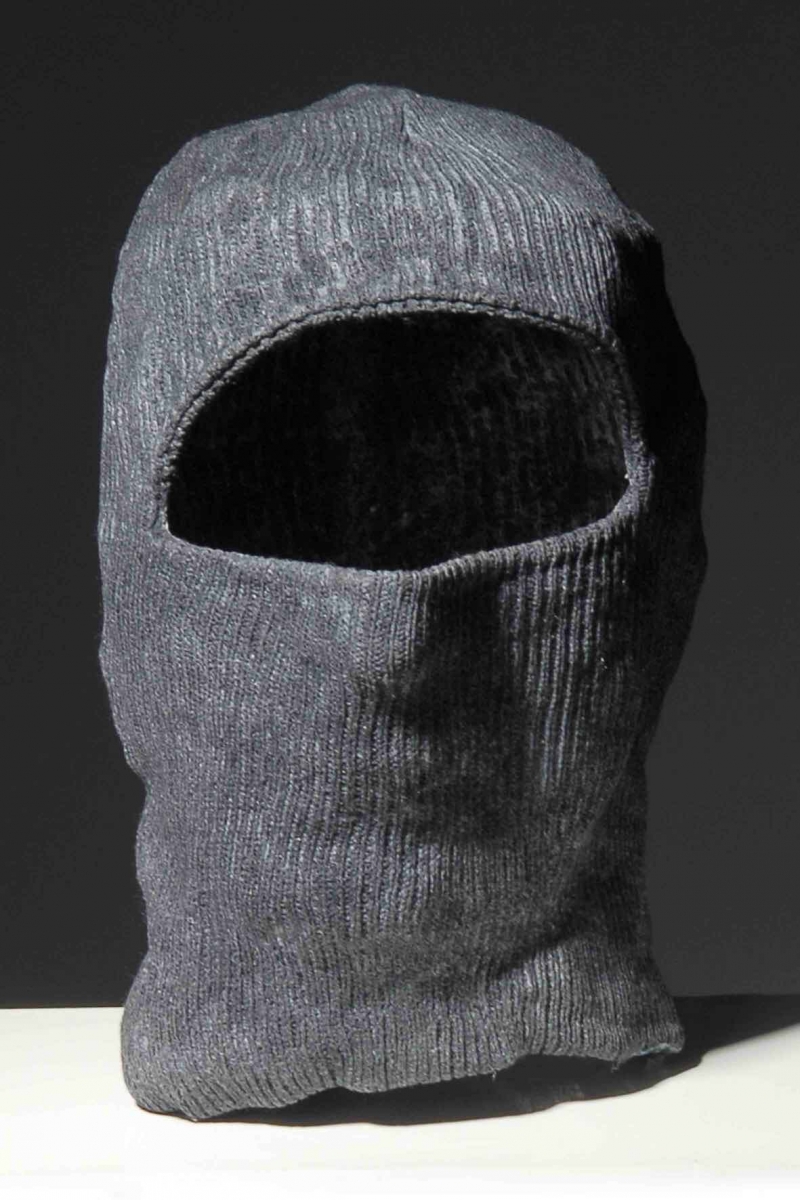 In sense of a generational treating of existential meditations of what stimulates neoliberalism with a considerably broader resonance of what it comes beyond macro as well as micro emancipation in a similar line to Rancière’ argument on political significance of art; Erkan Özgen points out that the issues of a precariousness are hardly new by introducing a history of struggles in defying moments of becoming inert in singularities of a representational particularities. By this means, both sides of “representational negation” consist of “one and many” at the conjunctions “in which the resistance of art is a relationship of tension between two different resistances”; that is to do with everyday forms of resistance compared to forms of collective resistance. This is designated namely through a “skullcap.” The center of the created negative image captured in the First Untitled presupposes the non-representational process towards the longstanding consequential resistance residing within different scope of marginalisation thriving cultural force in which it is extended out of its visually intense object position. This almost invites us questioning of what transgress historically that could remind anyone of the mass protests from 68’s to Gezi Park.
In sense of a generational treating of existential meditations of what stimulates neoliberalism with a considerably broader resonance of what it comes beyond macro as well as micro emancipation in a similar line to Rancière’ argument on political significance of art; Erkan Özgen points out that the issues of a precariousness are hardly new by introducing a history of struggles in defying moments of becoming inert in singularities of a representational particularities. By this means, both sides of “representational negation” consist of “one and many” at the conjunctions “in which the resistance of art is a relationship of tension between two different resistances”; that is to do with everyday forms of resistance compared to forms of collective resistance. This is designated namely through a “skullcap.” The center of the created negative image captured in the First Untitled presupposes the non-representational process towards the longstanding consequential resistance residing within different scope of marginalisation thriving cultural force in which it is extended out of its visually intense object position. This almost invites us questioning of what transgress historically that could remind anyone of the mass protests from 68’s to Gezi Park.
One day, instead of one night
a burst of machine-gun fire will flash,
if light cannot come otherwise (Oskar Davico – exempt of a poem)
Video, media documentation, 10 min
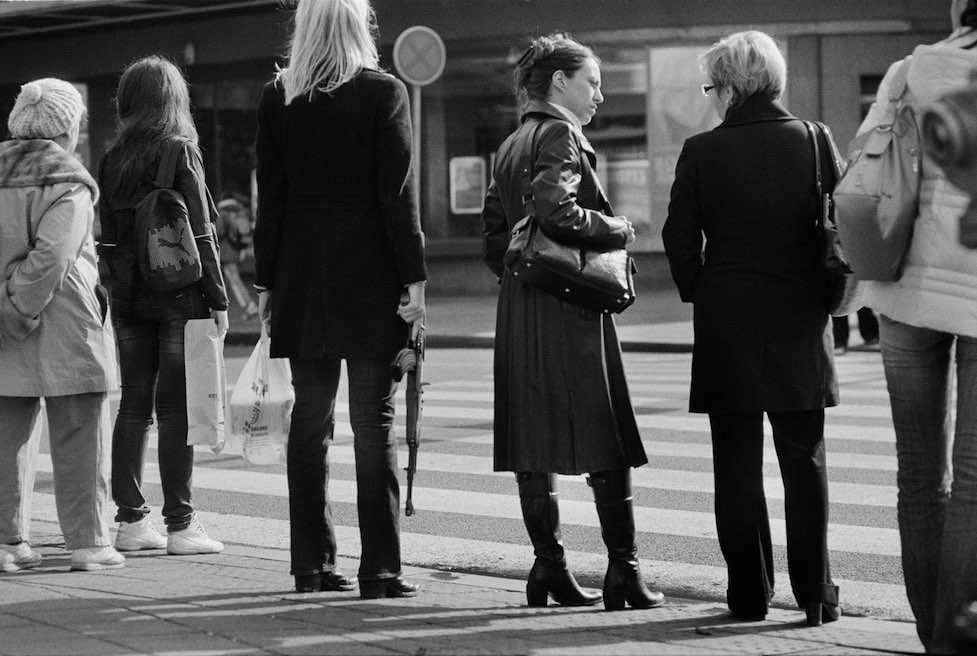 Milica Tomić reproaches the sites of historical struggle to the complex multiplicity of social movements in re-visiting locations of anti-fascist action in its association to the members of the People’s Liberation Movement and ordinary citizens who fought against the German occupation during the Second World War in the 1940s in Belgrade in her One day, instead of one night video work. In searching the abstract potentiality of the medium, she utilizes non-locality features in an urban art event, in particular one employing the strategy of image projection highlighting “both the multiplicity and unity of representational counter-regimes” in which the “criticism as a form of art” comes about.
Milica Tomić reproaches the sites of historical struggle to the complex multiplicity of social movements in re-visiting locations of anti-fascist action in its association to the members of the People’s Liberation Movement and ordinary citizens who fought against the German occupation during the Second World War in the 1940s in Belgrade in her One day, instead of one night video work. In searching the abstract potentiality of the medium, she utilizes non-locality features in an urban art event, in particular one employing the strategy of image projection highlighting “both the multiplicity and unity of representational counter-regimes” in which the “criticism as a form of art” comes about.
This eventuality engages us with what art carries beyond that address the conditions for politicized criticality in “re-forming” or “re-placing” everything, including the pertaining norms.
Dedicated to the members of the Anarcho-Syndicalist Initiative - Belgrade, 2009
Action/intervention in the public space, Belgrade, 2009
Photo credit: Srdjan Veljović
Conflict Syntax
Sound installation, 2018
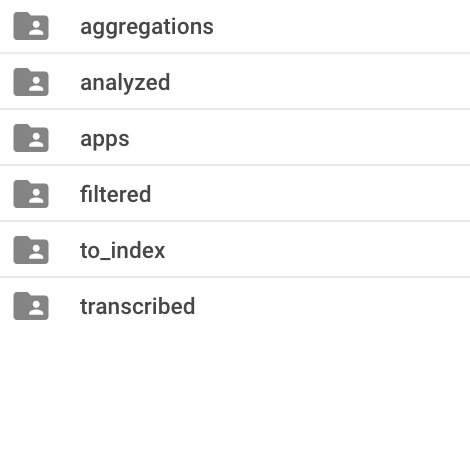 Conflict Syntax is an audio monodrama based on the artist’s attempt to conduct quantitative analysis of the language of the audio archive from the project Testimony – Truth or Politics. Conflict Syntax started as a concept, a proposal where the act of testifying is liberated from context, affect, emotion, memory, association—the archive is treated as a corpus of data to be dismembered into formal elements of language and analyzed with the aim of extracting objective sums and values. However, this process never succeeded in its entirety and the artist used the partial findings of such an analysis to construct her own testimonial of the process and difficulty of working with such material.
Conflict Syntax is an audio monodrama based on the artist’s attempt to conduct quantitative analysis of the language of the audio archive from the project Testimony – Truth or Politics. Conflict Syntax started as a concept, a proposal where the act of testifying is liberated from context, affect, emotion, memory, association—the archive is treated as a corpus of data to be dismembered into formal elements of language and analyzed with the aim of extracting objective sums and values. However, this process never succeeded in its entirety and the artist used the partial findings of such an analysis to construct her own testimonial of the process and difficulty of working with such material.
The interviews of the Testimony – Truth or Politics archive were automatically transcribed, and each individual interview was analyzed for the frequency of the occurrence of individual words. The results of this analysis are aggregated and the results are used for creating a spoken word script. At the same time, the analysis results are used as numerical values that are translated into sound events occurring in step with the monodrama’s duration.
Conflict Syntax deals with the contextually loaded material of the Testimony – Truth or Politics archive and within the issues the project is trying to cope with. Ultimately, the predicate of Testimony – Truth or Politics is a question of justice. Yet, justice is a neuralgic point of discourse concerning the wars in Ex-Yugoslavia and the transition that ensued—it is elusive, breaks and mutates. In Conflict Syntax, the deconstruction and re – signification of the material extracted from the archive through treating it as raw data is an attempt to homogenize the heterogeneous corpus of the archive, and reveal new insights and novel readings.
Conflict Syntax is written, performed, and engineered by Lala Raščić
Conflict Syntax was commissioned by Noa Treister and the Center for Cultural Decontamination, Belgrade
The Boys Are Back
Single channel video, 2018
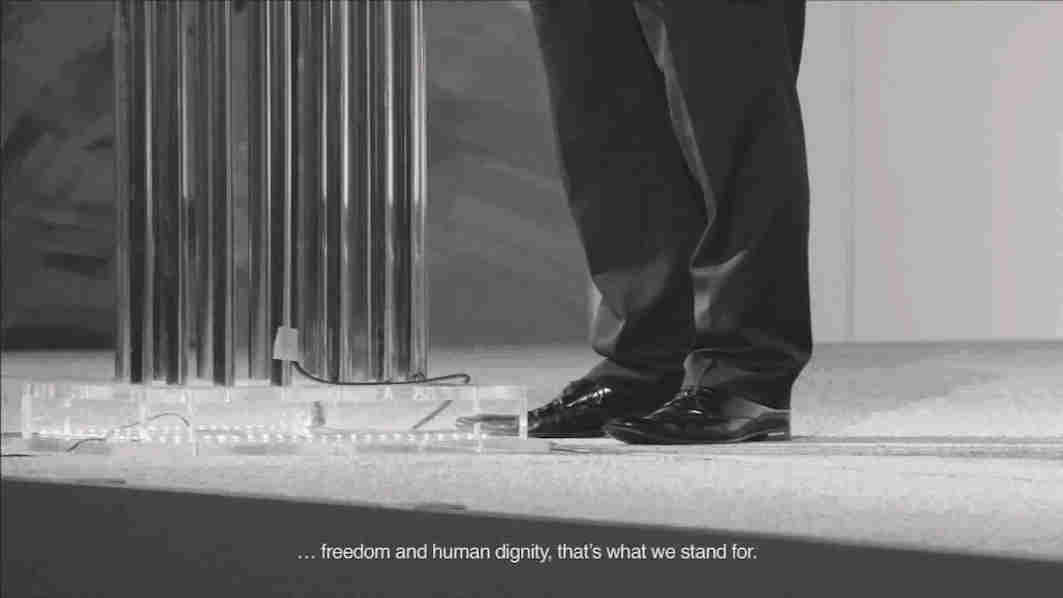 In her video work The Boys Are Back, Christina Werner deals with right-wing European networks and their representation and presence in the media. Werner emphasizes her thesis of the constant repetition of history in her deliberate choice of the act of repetition throughout the video. At a time in which the discourse on socio-political problems and questions is rapidly shifting toward the right in Europe, she seeks to sensitize the viewer to recognize the fragility of the democratic system and the perfidious strategy with which the right wing seeks to assert itself in society. “Save and expand Europe!” as the philosopher Susan Neiman recently stated as a motto for the times that we go through. This is the only chance “that this imperfect world has to preserve the important legacy of the “Enlightenment.”
In her video work The Boys Are Back, Christina Werner deals with right-wing European networks and their representation and presence in the media. Werner emphasizes her thesis of the constant repetition of history in her deliberate choice of the act of repetition throughout the video. At a time in which the discourse on socio-political problems and questions is rapidly shifting toward the right in Europe, she seeks to sensitize the viewer to recognize the fragility of the democratic system and the perfidious strategy with which the right wing seeks to assert itself in society. “Save and expand Europe!” as the philosopher Susan Neiman recently stated as a motto for the times that we go through. This is the only chance “that this imperfect world has to preserve the important legacy of the “Enlightenment.”
The video shows Dutch right-wing politician Geert Wilders during a speech he gave at Vienna’s Hofburg in March 2015. However, what we can see is only a close-up of his feet while speaking on stage. In this controversial speech, Wilders criticized the Islam religion as an ideology of war and hate. After his speech, the Initiative of Austrian Muslims tried to sue Wilders for insulting Islam, yet the Dutch authorities denied the claim for legal prosecution on the grounds that criticizing religion is not considered a criminal act in the Netherlands. The video contributes to the debate about the rising right-wing tendencies in Europe at an early stage, which took place shortly before the “summer of migration” and the—at that time unforeseeable—governmental change in Austria in 2017.
Supported by:
Stadtteilkultur, Interkulturalität und Internationale Angelegenheiten
Magistratsabteilung 7 – Bildende Kunst
ERSTE Foundation
In kind support by:
Manchester Metropolitan University
Smallprints
ARUCAD - Arkin University of Creative Arts and Design
° About us:
Open: Friday, Saturday 13.00 - 18.30 and viewing is available by appointment only for the rest of the weekdays. Admission free
(+43) 699 115 286 32
for more info: office@openspace-zkp.org
Open Space - Verein für ein neues Forum von Kunst und visueller Kultur aims to bring together diverse creative practices to encourage exchange and joint projects within its visual arts programme. Open Space, long established in Vienna, has maintained a distinctive creative agenda which offers new potentials in the field of contemporary art.
Mute Books Orders
For Mute Books distribution contact Anagram Books
contact@anagrambooks.com
For online purchases visit anagrambooks.com






